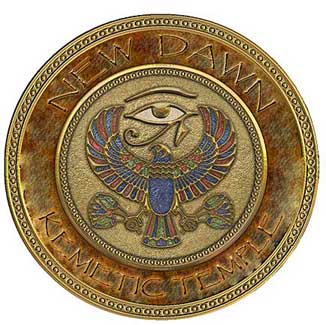|
|
|


~Mark Andrews~
Deir el-Medina occupies a small hollow in the foothills to the northwest of Amenhotep III's temple. It was a community of workers and craftsmen who constructed the royal tombs in the Valley of the Kings. Most of the temples associated with Deir el-Medina are located on the north side of the village. These temples include:
This temple was dedicated to the cult of Amenhotep I, and stands on the terrace just above the enclosure of the Ptolemaic temple of Hathor at its northern corner. The temple is destroyed, but originally it was very small, but in later times, a number of walls were added around the structure. It should be noted that Amenhotep I was probably the founder of this worker's village, so his cult worship here is not surprising.
Located on the northern side of the Ptolemaic (Greek) temple of Hathor, and southward of Amenhotep I's cult temple lies the Hathor Chapel built by Seti I. The temple was built for the workmen of the village, and was considerably larger then Amenhotep I's temple. It consisted of a series of architectural elements before a tripartite sanctuary.
By far the largest temple in this area is the Ptolemaic Temple of Hathor. It was built atop the location of several earlier temple structures, and is itself fronted by a staircase built during the reign of Ramesses II. However, the main complex was built and decorated in the 3rd century BC by Ptolemy IV Philopator and several of his successors (Ptolemies VI and VIII). Even today, it remains in a very fine state of preservation. Within this temple, a columned hall communicates with a narrow vestibule before opening into three sanctuaries. The right (eastern) sanctuary was dedicated to Amun-Re-Osiris, while the western or left sanctuary was dedicated to Amun-Sokar-Osiris. The middle of the three sanctuaries was dedicated to Hathor, the main goddess of the temple.
Interestingly, the western sanctuary dedicated to Amun-Sokar-Osiris has a scene depicting an Osiride judgment, commonly found in tombs but very rarely decorating temple complexes.
A stairway leads from the left side of the vestibule to the temple's terrace roof where the remains of several small votive chapels lie around the enclosure's north wall.
Not Surprisingly, considering the nature of this community, the temple, like that of Hatshepsut at Deir el-Bahri, also contains chapels dedicated to Imhotep and Amenhotep son of Hapu, who of course were both great architects and builders.
Long after the abandonment of the village, the temple continued to function, and was eventually transformed into a Coptic monastery. In fact, the village derives its modern name, Deir el-Medina, meaning "Monastery of the Town", form this ancient monastery.
Across the small wadi from the Ptolemaic Temple of Hathor are the remains of a temple to Amun and the other members of the Theban triad, consisting of Mut, Khonsu and Amun. This temple was built by Ramesses II.